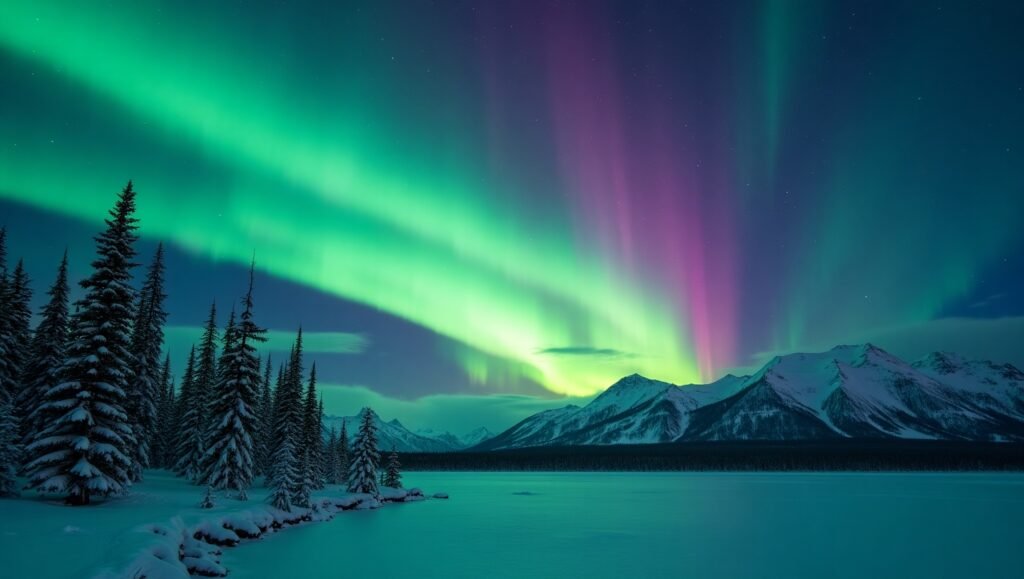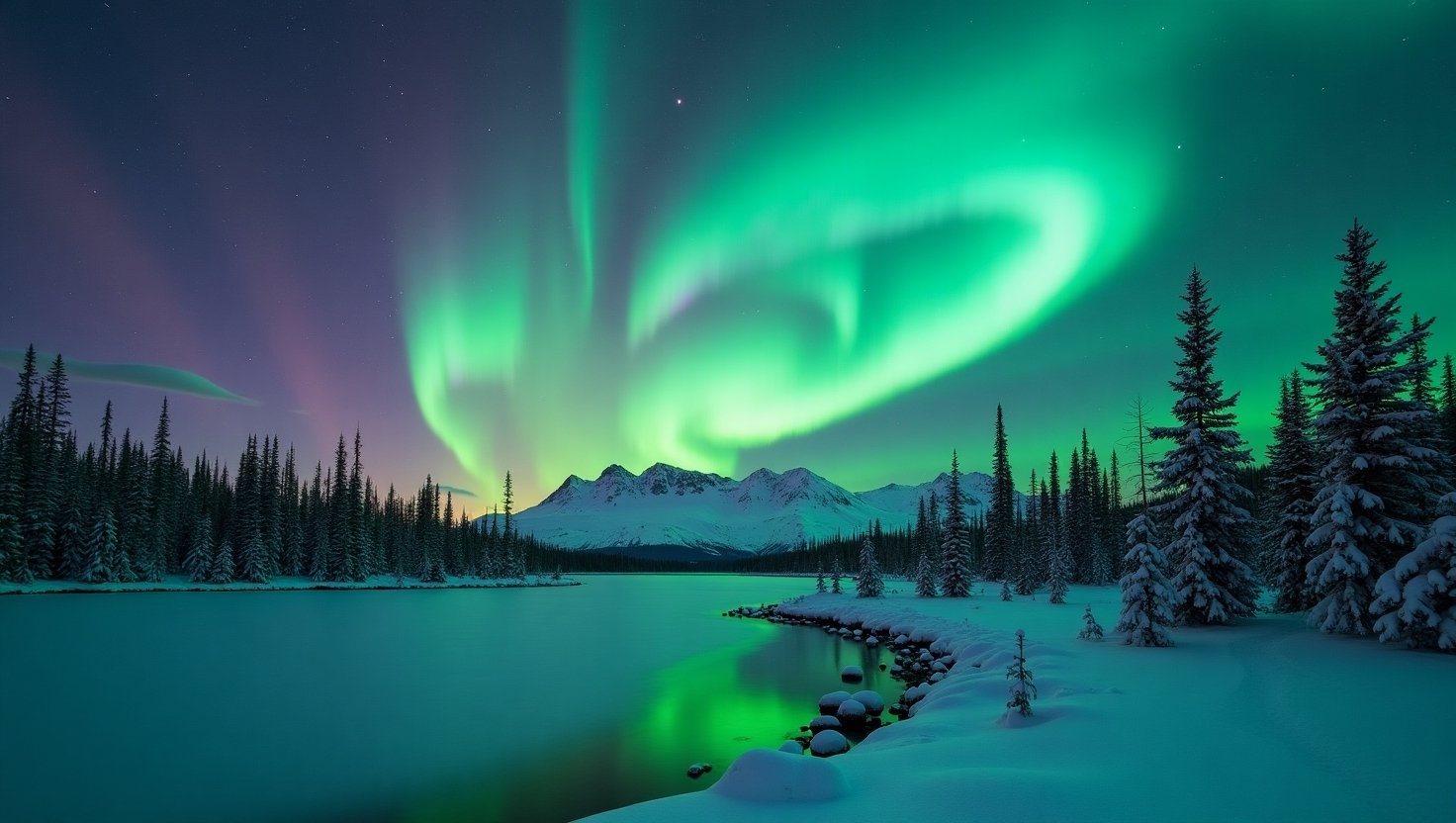Your breath crystallizes in the -20°F air, sharp as shattered glass. Above you, the inky void of an Alaskan winter night suddenly rips open. Emerald rivers pulse, crimson tendrils lick the stars, and violet curtains shimmer like the robes of forgotten gods. This isn’t just light; it’s the cosmos dancing. The hunt for the best place to see Northern Lights in the USA is a pilgrimage into darkness, where science meets ancient myth, and the sky tells stories older than nations.
Forget passive observation. You’re stepping onto a stage where Vikings saw the glint of Valkyrie armor, Inuit ancestors heard the whispers of spirits playing football with a walrus skull, and early scientists grappled with celestial fire. Seeing the Aurora Borealis isn’t a checkbox; it’s time travel etched in photons.
Why the USA Holds Untold Aurora Secrets
While Scandinavia gets the hype, the USA offers vast, accessible wilderness under the potent “Auroral Oval” – the sweet spot circling the geomagnetic poles. We have latitude, darkness, and landscapes that turn the lights into pure theatre. Think of it not just as geography, but as unlocking different chapters of the aurora’s story:
- Alaska: The primordial chapter. Raw, vast, steeped in Indigenous cosmologies.
- Northern Minnesota/Michigan: The Great Lakes chapter. Reflections doubling the magic, frontier history whispering from the pines.
- Northern Maine: The Atlantic chapter. Solitude so deep you hear the universe hum.
- Idaho/Montana/Wyoming: The Mountain West chapter. Peaks framing the spectacle, cowboy skies ablaze.
- Washington State: The Volcanic chapter. Dramatic silhouettes against the celestial fire.
Mapping Your Cosmic Journey: Prime USA Viewing Grounds
| Location | Core Season | Key Advantage | Historical/Cultural Angle | Pro Tip |
|---|---|---|---|---|
| Fairbanks, Alaska | Late Aug – Mid Apr | Highest frequency & intensity in the USA | Athabascan stories of ancestors’ spirits dancing | Combine with Chena Hot Springs for warmth under the lights. |
| Denali National Park, AK | Sept – March | Unpolluted wilderness, iconic mountain backdrop | “Denali” meaning “The Great One” under greater lights | Stay at park lodges (limited winter access) or nearby Talkeetna. |
| Voyageurs NP, Minnesota | Sept – April | Dark sky park, reflections over interconnected lakes | Fur trade voyageurs navigated by stars (and lights?) | Rent a houseboat for a unique floating viewing platform. |
| Isle Royale NP, Michigan | Sept – Oct, Mar-Apr | Extreme isolation, Superior’s vastness | Ancient copper miners witnessed the same skies | Summer access only; shoulder seasons offer dark skies & fewer people. |
| Aroostook County, Maine | Oct – March | East Coast’s darkest skies, minimal light pollution | “The County’s” logging history under ethereal glow | Seek out Katahdin Woods & Waters National Monument vistas. |
| Glacier National Park, MT | Sept – April | Peaks like jagged teeth biting the luminous sky | Blackfeet Nation’s deep celestial knowledge | Lake McDonald offers stunning reflections on calm nights. |
| Sawtooth Mountains, Idaho | Sept – April | High altitude, crystalline air, dramatic granite | Shoshone-Bannock traditions intertwined with the sky | Stanley, ID is a prime basecamp with surprisingly good amenities. |
| San Juan Islands, WA | Strong Storms (Oct-Mar) | Unique maritime setting, Orcas possible by day! | Salish Sea cultures’ rich storytelling traditions | Requires luck with clear skies & strong solar activity, but unforgettable. |
Beyond the Forecast: Unearthing Hidden Aurora Narratives
The science is dazzling – solar wind slamming into Earth’s magnetosphere, exciting atmospheric gases. But the human story is richer. Stand where:
- Gold Rush Prospectors Mistook Them for Fire: In the Klondike, desperate miners sometimes saw the shimmering greens and reds as distant campfires or burning claims, fueling both hope and frenzy on frozen trails.
- Civil War Soldiers Saw Omens: Accounts from troops in northern states describe the aurora during pivotal winters, interpreting the blood-red hues as portents of the conflict’s ferocity. Imagine young soldiers, far from home, seeing the sky bleed.
- The “Great Aurora” of 1859: Telegraph offices across the USA, including Maine and New York, experienced spontaneous fires and operators sending messages with batteries disconnected, powered solely by the geomagnetic storm. This “Carrington Event” level storm lit skies as far south as Cuba. Could it happen again? Scientists say yes. Be ready.

Local Secrets: How to Hunt Like an Aurora Sage
Forget generic tips. This is wisdom passed ranger-to-ranger, photographer-to-photographer:
- Embrace the Cold: Seriously. The clearest, most stable nights are often the coldest. Your DSLR battery will die fast; keep spares warm in inner pockets. Hand warmers? Put them on the camera, not just in your gloves.
- Ditch the “Peak Hours” Myth: While midnight is statistically favored, strong displays can erupt anytime it’s dark enough. Be prepared from dusk till dawn. Patience is your most vital gear.
- Talk to the Skykeepers: In Alaska, chat with Indigenous cultural center staff. In Minnesota, find the local astronomy club member at the diner. In Maine, ask the lobster boat captain at dawn. Their anecdotal knowledge of local weather quirks beats any app.
- The “Borealis Burger” & Other Fuel: Fairbanks: The Cookie Jar (hearty breakfasts post-aurora chase). Upper Peninsula, MI: The Fitz in Eagle Harbor (historic pub, warm pasties). Northern Maine: Moose Horn Lodge (rustic, local game stews). Idaho: Stanley Baking Co. (warm cinnamon rolls for frigid mornings).
- Sleep Smart: Don’t waste prime dark hours driving to a remote lodge. Stay at the dark site. Think isolated cabins (many on VRBO), park lodges (Denali, Voyageurs), or dedicated aurora B&Bs (like Borealis Basecamp near Fairbanks with glass igloos).
Read Also: MT Rainbow: Where Time Travel Isn’t Fiction, It’s Footsteps
Capturing Ghosts: Essential Aurora Photography (No PhD Needed!)
- Gear Basics: DSLR/Mirrorless with manual mode. Wide-angle, fast lens (f/2.8 or lower). Sturdy tripod. Remote shutter release (or use timer).
- Settings Start Point: Manual Mode. ISO 1600-6400 (adjust for noise). Aperture f/2.8 (widest). Shutter Speed 5-15 seconds (start at 10s, adjust if blurry/stars trail). Manual Focus (infinity, but CHECK on a bright star first!).
- Pro Hack: Use your phone screen as a makeshift light panel to briefly illuminate foreground elements (a cabin, trees, yourself) during a long exposure. Don’t use the flash!
- Embrace Imperfection: A slightly noisy shot capturing the awe is better than no shot. Sometimes, just put the camera down and be there.
Your Time-Traveler’s Aurora Toolkit: 3 Essential Tasks
- Download the “Aurora” App (Alaska Fairbanks University): The most reliable forecast tool, showing real-time activity and short-term predictions. Set alerts!
- Learn the Local Phrase: In Alaska, greet the lights with a respectful whisper: “Yaamaałqaa, k’os.” (Yup’ik: “Thank you, sky spirit.”). Locals appreciate the respect.
- Find the “Lucky Stone”: At Chena Hot Springs (AK), find the heart-shaped rock near the main pool. At Voyageurs, find a smooth, wave-worn stone on Rainy Lake’s shore. Keep it in your pocket during your hunt. (Belief is half the magic!).
FAQs: Your Aurora Expeditions Answered
Q: Can I really see them without going to Alaska?
A: Absolutely! During periods of high solar activity (G3 storm or higher), the auroral oval expands dramatically. Places like Michigan’s Upper Peninsula, Maine, and even northern Washington state have documented vivid displays. Alaska just offers frequency.
Q: What’s the single biggest mistake aurora newbies make?
A: Not dressing for extended sub-zero exposure. You need serious thermal layers (wool/synthetic), insulated boots rated for -20°F or lower, heavy mittens (not gloves!), and a balaclava. Hypothermia kills the vibe fast.
Q: Are the Northern Lights better in winter?
A: Yes, primarily due to longer darkness. Late September to early April offers the most reliable window. However, strong storms can create visible displays around the equinoxes (Sept/Oct, Mar/Apr) with milder temps.
Q: What does KP Index actually mean?
A: It measures geomagnetic activity (0-9). KP 0-3: Low activity, typically only visible far north like Fairbanks. KP 4: Possible visibility in northern tier states (MN, MI, ME) during dark nights. KP 5+: Good chance further south. KP 7+: Potential for spectacular displays deep into the USA. Use it as a guide, not a guarantee!
Q: Is it worth hiring a guide?
A: For first-timers, especially in remote areas like Alaska: 100% yes. They know micro-weather patterns, secret viewpoints, provide warm transport/shelter, handle logistics, and increase your success rate exponentially. Look for small, locally-owned operators.
The Sky is Waiting. The Past is Watching.
This isn’t about ticking a box on a bucket list. It’s about standing under the same cosmic storm that terrified and inspired our ancestors. It’s about feeling the sheer, humbling scale of our planet’s place in a vast magnetic dance. The best places to see Northern Lights in the USA are portals. Pack your warmest layers, charge your camera, and arm yourself with patience. The ghosts in the sky are ready to perform. When will you answer the call? Share your first aurora story or burning question below – let’s chase the light together.
You May Also Like: Kauai Adventures: 20 Epic Things To Do in Kauai

